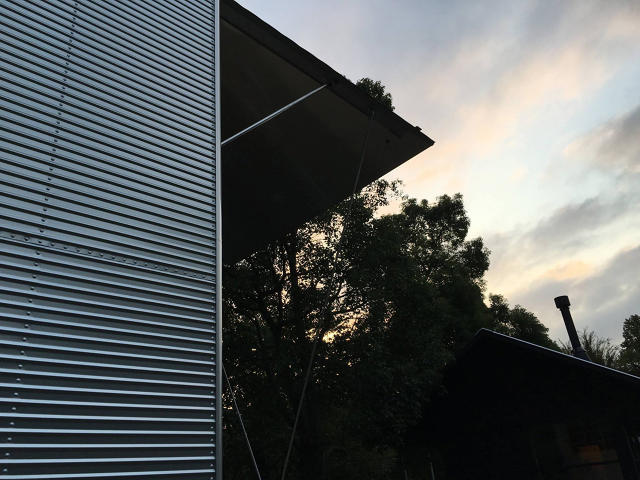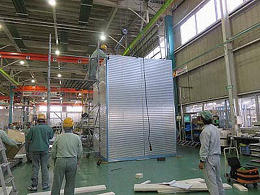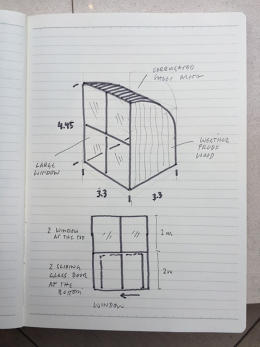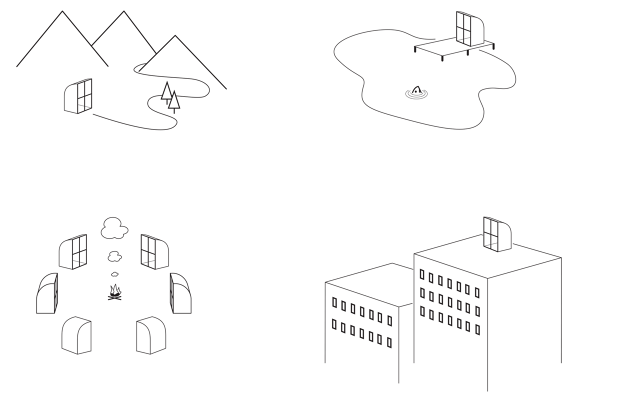A in the back of-The-Scenes Glimpse At How Muji Makes A Tiny safe haven
Industrial design and structure collide in Konstantin Grcic’s a hundred-square-foot prefab hut for Muji. right here, he walks us through his process.
December 1, 2015 is not any architect. renowned for colorful, exquisitely crafted furnishings, the Munich-based industrial fashion designer has by no means built anything larger than a change express pavilion. So when the japanese retail massive Muji tapped Grcic to enhance a prefabricated hut, he figured he’d do what he does best. “My approach was that of a dressmaker designing a constructing, now not a designer seeking to be an architect,” Grcic says in a phone interview. “the idea that for Muji could be very much creating a constructing as a product, one thing that could be reproduced and produced in a serial means.”

the result, a spartan a hundred and five-square-foot field with a dozing loft, rethinks conventional notions of safe haven. It doesn’t have a toilet or a kitchen. From the skin, it looks like a shed for your gardening tools as much as a spot to hang your hat. The blank-slate impact is the purpose. “today life is altering, stipulations are altering always, and we now have to repeatedly adapt to new eventualities,” Grcic says. “thru its lifetime, a building sees so many homeowners and occupants doing different things. A excellent constructing is one that can adapt to totally different customers.”
A good constructing is also person who wastes as few tools as imaginable. Prefab shelters are ceaselessly touted as cheaper and no more useful resource-intensive than conventional buildings, however the fact doesn’t always suit the hype. So Grcic alit on a suave idea: instead of creating a form and reverse-engineering how it may be developed, he let the capabilities of an present meeting line dictate the design. Fabrication first, type 2d.
“As industrial designers, we take into consideration how issues are made time and again whereas to an architect, a constructing is frequently a prototype, a one-off,” Grcic says. “of course there are nice architects who’ve addressed prefabrication—i don’t declare to be the first one to think that method—however that approach is pure. A building is constituted of fabricated components and assembled of business components instead of something that’s manufactured on website online.”
at the beginning educated as a cabinetmaker, Grcic is preoccupied through how issues are made. “I’m always all in favour of seeing the factories, figuring out the machinery, learning what the processes are,” he says. “For me it is a fundamental proposal, but additionally a roughly pronouncing it more objectively, it is information that i feel is important to understand as a dressmaker. The Muji hut has exactly this way and the design stems from an interest in how you can construct a space or safe haven.”

For the project, Muji held a kickoff meeting in Tokyo ultimate March. Naoto Fukasawa and Jasper Morrison, two other designers Muji tapped to create huts, had strong ideas about what they wished to assemble; Grcic did not. As he walked across the metropolis later on, the easy beauty of supply vehicles caught his eye and sparked a ingenious leap forward. He seen their corrugated-aluminum cladding and corner small print and began snapping photographs. one of the best designs got here from a company called Kitamura so he referred to as up the logo and requested to peer how their assembly line.

After learning extra about Kitamura, Grcic was convinced that the corporate’s meeting line would work for his hut. “Kitamura is an interesting business because it uses a gadget of parts that may be kind of made to measure for what you need your truck to appear to be,” Grcic says. “That was once good for me to use to make a constructing. In a way the supply trucks are buildings—they’re packing containers on the back of a truck. they have got all the components of a building—a floor, a ceiling, walls, and doors. they may be insulated, they’re difficult enough to withstand weather and temperature. And the nice thing is that there is an trade already making this, they have the parts and they’re flexible.” That meant that Muji wouldn’t have to create infrastructure from scratch, and pricing would be more straightforward to calculate. What’s more, existing infrastructure would lend a hand ease some of the challenges that include engaged on a venture from afar (Muji and Kitamura are in Japan and Grcic’s studio is in Germany).

The design he came up with is largely a shed. The Muji Hut transient called for creating “a room with a view” so Grcic translated that to its most direct experience. He didn’t aim to construct a prescriptive house, but opted for a flexible design which may be deployed in myriad situations. initially, he conceived of a curved rear wall that linked with the roof, but after that proved unattainable from a producing viewpoint, he modified the design to be a tall dice. “That was once a moment the place I considered what the priority is in the design,” he says. “was once I doing it with Kitamura and their infrastructure? Or have I fallen in love with the curved roof?” ultimately, he determined that the factory was once the most important part of the undertaking.
Three of the hut’s sides are clad with corrugated aluminum and the fourth is composed of sliding glass doorways and windows. Two huge shutters fold open to turn out to be a deck and awning. When closed, they give protection to the glass. The pavilion’s footprint—10.8 toes by means of 9.eight toes—and peak—sixteen.25 ft (1.5 times the longest side)—are in line with the utmost dimensions for a construction to be built without needing makes it possible for or approval from the town. the japanese building code allowed a mezzanine inside of simply so long as it didn’t duvet more than half of the footprint, so Grcic included a 2d degree that could be used for storage or a slumbering loft.

As for not together with a kitchen or a bathroom, Grcic says, “Housing concerns have been by no means driving the design, however i think in Japan, what’s attention-grabbing and related for us to study is how you are living in very small areas and to make a small space really feel in point of fact big,” Grcic says. “i love small areas myself. i’m fascinated about a small space and this idea of flexibility in how it’s used.”
at the hut’s unveiling throughout Tokyo Design Week, Grcic overheard individuals speaking about how they may use the distance: as a portray studio, a storefront, a pop-up gallery. That the hut might encourage such totally different applications meant that it was once successful in Grcic’s mind. It’s nonetheless in the prototype phase and very a lot a design in development, however the reception proved that Grcic’s underlying idea process resonated with would-be consumers. “That’s what i believe structure lately has to provide,” he says, “the ability to adapt an area to totally different makes use of.”
generally talking, 100% manufacturing unit-built properties have proven to be equal elements fascinating and elusive. the fact is that they’re ceaselessly simply as pricey—if no longer extra so—than conventionally built structure. depending on the builder’s methodology, prefabs are frequently developed the same method and with the identical materials as a stick-constructed home, but the labor takes place in a controlled atmosphere. possibly taking cues from non-homebuilding industries, the best way Grcic has done, will make better, quicker, extra reasonably priced prefabs much less of a pipe dream.
The Muji huts designed by using Grcic, Naoto Fukasawa, and Jasper Morrison, start at $24,000. For more information, go here.
[All Photos (unless otherwise noted): via Konstantin Grcic]
(62)













